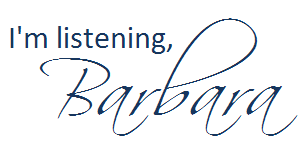
One of the most popular posts here at Public Relations Matters is one I wrote years ago on writing resumes. Below, I’ve updated this post for 2023.
What’s the purpose of a resume? It’s not to get you a job. . . instead, it’s to provide a positive first impression that MAY garner an interview for you. The advice below comes from my years of being a hiring leader – and listening to many more. If you’re lucky, hiring leaders may scan your resume for up to 10 seconds (10 seconds!) before they determine if it’s worth pursuing further. The tips below should help you gain their attention in a positive way.
In General
- Tailor your resume to the specific position that you’re applying for. Use the same phrasing in your resume that you’ve found in the employer’s job posting whenever possible.
- If you have less than 10 years of experience, it’s best to stick to the traditional one-page resume. Each additional 10 years may help to “earn” you an additional page. (If you want or need to provide more details, offer the URL of your LinkedIn profile. See my profile.) If you are not yet out of college, it’s presumptuous to think you need more than a one-page resume.
- Corinne Weisgerber reminds us, “Resumes are often read by resume scanners first, so you got to write them to be read by a computer and a human audience. So work those keywords in. Just like SEO.” Pepper your resume with keywords and terms that are relevant to the career field and industry in which you desire employment. Phrase your work experience in terms that are relevant to your career goal.
- Go easy on the fonts. Simpler is better (but avoid Times New Roman, as that may make your resume look dated.)
- Even though many of the resume templates you can find in Canva and other sites include them, leave your photo off of your resume unless you’re applying for a job in Europe, says Leah Jones.
Contact Information
- Your full name should be at the top of your resume, followed by contact information, including email address, cell phone number, city and state.
- Use a professional-looking email address, not something like fuzzybunnyslippers@hotmail.com. (You’d be surprised.)
- It’s no longer typical to see a candidate’s complete mailing address on a resume according to Chandler Claxton.
- Optional: the URLs of your LinkedIn profile and relevant social media accounts. (ONLY include the social media accounts you want a potential employer to look at, of course.)
- If your blog has content that may interest your potential employer, include its URL or the URL to a specific landing page with links to relevant posts on your resume.
- Use the same header (contact information) for your resume, cover letter and reference page. Everything should coordinate.
Experience and Education
- If you’re a soon-to-be or recent college graduate, you may want to highlight your education, followed by your experience. If you’ve had work experience in the field where you are seeking a new role, lead off with your experience.
- Use reverse chronological order (most recent first) when listing your experience and education.
- Wherever possible, quantify your achievements in your experience. For example, “Grew 11 channels by 10,000 followers in six months.”
- Always start every bullet point in your experience section with an action verb.
- Chandler Claxton reminds us to use present tense for current jobs and past tense for previous jobs.
- Never start a bullet point with “responsible for” or “duties included.” (Just because you’re responsible for something doesn’t mean you actually did it.)
- If you have little paid work experience, provide details on projects done in classes to show that you are prepared to enter the working world.
- Volunteer experience counts too! Don’t forget to include service projects you’ve been involved with.
- Explain acronyms and cryptic group names on resumes. A potential employer will not automatically know that SOCS stands for Society of Communication Scholars, ILA stands for International Listening Association, or that The Oaks Agency is a public relations firm made up of college students.
- Many employers assume that if an organization’s name includes Greek letters, it’s a social fraternity or sorority. If you belong to something Phi Kappa Phi, indicate that this is an honor society.
- If you are still in college, it’s okay to leave your high school on your resume if you have available space for it, especially if you did something noteworthy during your high school years. After you graduate from college, leave high school off your resume.
- What to do about that GPA? If it’s above 3.0 (on a 4-point scale), you may want to include it. If it starts with a 2 or lower, definitely leave it off. Or, you can include your GPA just in your major if you’d like, for example “3.4 GPA in Major.”
- Before you graduate, you can still include your anticipated degree on your resume. For example, “Bachelor of Science in Public Relations expected in May 2023.”
For entry-level public relations positions, Jennifer Abshire of Abshire Public Relations & Marketing offers these additional suggestions:
- Leave the objective off, or customize it for the specific position you’re applying for. Don’t use a generic one that you found on a template somewhere.
- Include all your work experience, even if it seems not directly related to the position. (The worst that will happen is that it will show that you are a hard worker.) Abshire holds in high regard people who are well rounded and street smart, rather than with a high GPA and no work experience or community involvement.
- Send a few samples of your writing or design work along with your resume.
- If sending your resume (and samples) electronically, make one PDF file that has all the information in it, rather than sending multiple attachments. (For an inexpensive and easy-to-use program for creating PDFs, try CutePDF.)
A Few Common Sense Reminders in Closing
- Jen Zingsheim Phillips says, “Don’t lie and don’t exaggerate.” It’s far too easy for you to get caught. Jen adds, “Employers will understand starting out — they will not understand lying.”
- Doublecheck every link you include to ensure they go where you expect them to go.
- Read your resume backwards, from the bottom up. It might be easier to spot errors this way. Your goal is zero mistakes.
After you’ve created your resume, have several people proofread it for you. Set it aside for a while. Then measure your resume up against this Resume Checklist.
What additional tips would YOU share?


